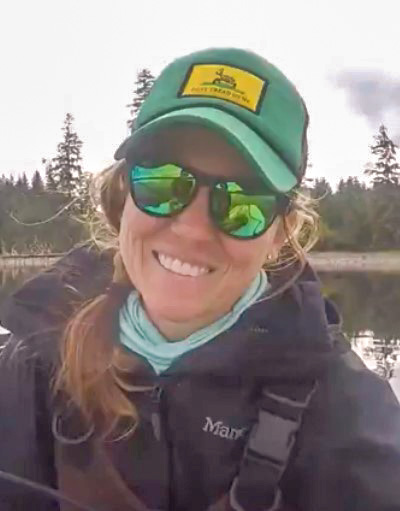Legacy Post Disclaimer
This is a #Legacy post imported from The Apalachicola Time’s previous platform. If you’re experiencing issues with this article, please email us at news@nevespublishing.com.
FWC says too soon to reopen bay
With $20 million from the National Fish and Wildlife Foundation on the line, representatives of the Florida Fish and Wildlife Conservation Commission are hoping to begin a major reshelling program by next summer once the results of a pilot study are complete.
In an appearance before the county commission Dec. 8, Jon Creamer, FWC’s northwest regional director, and Devin Resko, program coordinator for FWC’s fishery disaster relief program, outlined the agency’s plans to meet NFWF’s requirement that they complete a $3.3 million pilot study in the months ahead in order to secure the remaining $16 million of $20 million pledged to revitalize the bay.
The study, marking the first stage of the process, will bring together all the available data collection, devise a harvest management system and outline habitat restoration decisions in advance of the reshelling.
“We want to get a good baseline where we are and get a very strong baseline of the current state of Apalachicola Bay. We need to learn from that what worked and what didn’t work,” Resko said.
“NFWF has expressed concerns over approving the remaining $16 million for restoration activities, because past restoration operations in the bay did not perform as well as expected,” he said. “A large number of unknowns are still present.”
He said together with Florida State and the Florida Wildlife Research Institute, FWC will have more data to construct and perform larger restoration activity.”
Resko stressed that it is too soon to reopen the bay, despite some limited success in seeing oyster growth, mainly on the east and central east sides of the bay.
He said much of the 2,000 acres of potential oyster harvest areas of the bay remain severely depleted, well under the 400 bags per acre threshold that FWC established if it were to reopen the bay to tonging ahead of the projected restart to wild-caught harvest Jan. 1, 2026.
“To date, only 56 acres from one restoration project have densities of oysters that meet a traditional threshold for sustainable commercial harvest,” said Resko. “We are on the 3-yard-line going the long way; we have a long ways to go until we see a touchdown. It’s not as quickly as we hoped. Hopefully we can get a snowball effect when we get going.”
He said that if harvesting were to reopen, it might delay the implementation or reduce the potential success of the upcoming NFWF restoration.
“Commercial tonging on restored areas could undo recent gains from restoration,” Resko said. “Removal of oysters in the harvest, and habitat degradation from commercial activities will likely increase the time needed to restore oyster populations in the bay.”
Creamer said that he hopes to see the pilot study completed by June, after which he said there would be a stepped-up outreach to local oystermen for their input.
“I’m going to make sure local oystermen have a seat at the table, they are listened to and they are involved in every decision making part of this work,” Resko said.
Commissioners share their frustration
County commissioners voiced frustration with the slow pace of the FWC work, which the agency said has been partially due to the coronavirus slowdown.
“We’re three years into a five-year closure and we don’t even have material on the bars yet,” said Commissioner Ottice Amison. “We’re throwing a lot of money at this and we’re three years into it.
“That’s the bay that people fed their children for generations on. Why are we reinventing the wheel so to speak? We’ve been here before; this is not unchartered waters There’s got to be something you guys can go back to,” he said.
“We wish we were under large-scale restoration right now for the whole bay,” Creamer said. “We just haven’t been able to make things work.”
Amison and Noah Lockley urged FWC to review data as far back as 1985-86. “We’ve been at this flatline,” Amison said. “We’ve seen this happen before. They shelled the bar, and re-shelled what was there. Why not concentrate on the natural bar and put material there?”
Commissioner Jessica Ward said she took a trip out to the bars with FWC and FSU researchers.
“I know y’all are the ‘bad guys,’” she said. “A lot of oystermen and women who work on the water have felt they have not been able to interact and give their thoughts on what they think is best for the bay.
“There’s been a failure of communication,” she said. “We do have people who need to get back to work as soon as possible.”
Commissioner Noah Lockley was characteristically blunt.
“This is not my first rodeo, to see the bay sick like it is,” he said. “How many agencies you all got working out there? There are a lot of chefs in the kitchen.
“Communication is the first, second and third most important thing,” Lockley said.



Meet the Editor
David Adlerstein, The Apalachicola Times’ digital editor, started with the news outlet in January 2002 as a reporter.
Prior to then, David Adlerstein began as a newspaperman with a small Boston weekly, after graduating magna cum laude from Brandeis University in Waltham, Massachusetts. He later edited the weekly Bellville Times, and as business reporter for the daily Marion Star, both not far from his hometown of Columbus, Ohio.
In 1995, he moved to South Florida, and worked as a business reporter and editor of Medical Business newspaper. In Jan. 2002, he began with the Apalachicola Times, first as reporter and later as editor, and in Oct. 2020, also began editing the Port St. Joe Star.